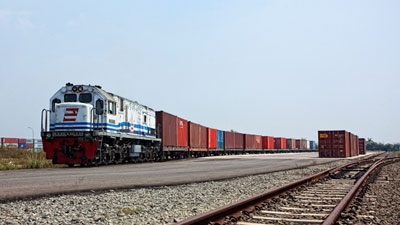- Indonesia’s economy grew at a steady pace throughout 2012 but domestic economic and policy pressures are mounting.
- Full-year GDP growth for 2012 was 6.2 percent, down slightly from 6.5 percent in 2011. The World Bank projects 6.2 percent growth in 2013, a notch below the previous forecast of 6.3 percent. Growth in 2014 is projected to be 6.5 percent (unchanged from previous projections). The risks to these projections remain skewed to the downside, while moving growth significantly higher will be challenging.
- Sources of pressure on the economy include the moderation in investment growth, the possible implications of moderating measured real sales and nominal GDP growth, trends in the external balances, the continuing burden of energy subsidies, and the slowing pace of poverty reduction.
- The biggest risk to near-term growth may come from domestic investment. Investment spending has slowed, particularly in capital-intensive resource sectors. Fixed investment growth declined to 7.3 percent year-on-year in the fourth quarter of 2012, down from 12.5 percent in the second, and imports of capital goods have weakened. The investment climate would benefit from improved certainty in the regulatory environment.
- Appropriate policy responses to mounting pressures could also include increasing public infrastructure investment and focusing on trade competitiveness, as well as fuel subsidy reform.
- New data on trade in value-added from the OECD and the WTO reveal the importance of imported inputs in Indonesia’s manufactured exports, and the scope to increase Indonesia’s integration in international production chains, and to improve export performance by facilitating the development of export-related services.
- Investment is also crucially needed in inadequate and ageing infrastructure which continues to constrain growth, causing bottlenecks and high logistics costs. Infrastructure investment remains at around 3 to 4 percent of GDP, compared with pre-Asian crisis levels of around 7 percent.
- The infrastructure challenge for many of Indonesia’s cities is particularly acute - more than half of Indonesia’s population live in urban areas, and the pace of urbanization remains high. Improving the level, quality and efficiency of infrastructure investment can help to unlock the economic benefits of urban agglomerations and support the quality of service delivery, particularly in mid-size cities that lag behind smaller urban centers and the “mega-cities”.
For related analysis see:
For more on Indonesia’s manufacturing sector, see the World Bank Report “Picking up the pace: reviving growth in Indonesia’s manufacturing sector”, 2012
For more on the infrastructure investment challenge as it relates to road infrastructure, see the World Bank Report “Investing in Indonesia’s Roads: Improving Efficiency and Closing the Financing Gap - road sector public expenditure review 2012”, 2013
For more on urbanization in Indonesia, see the World Bank Report "The rise of metropolitan regions: towards inclusive and sustainable regional development", 2012.

